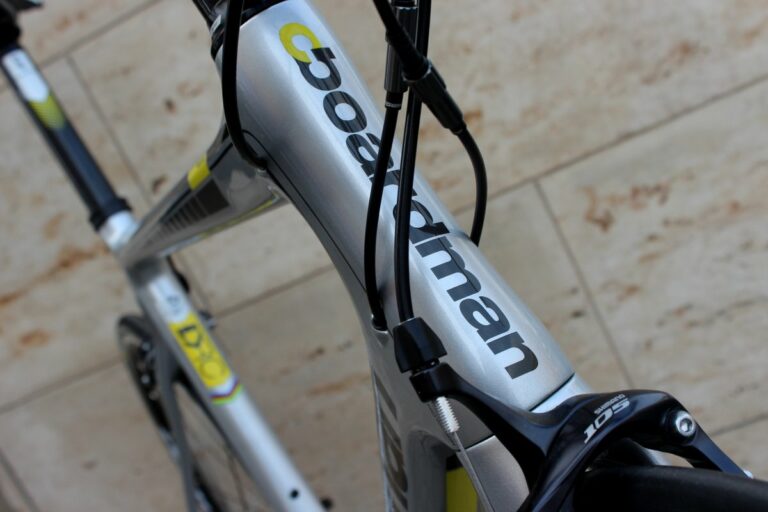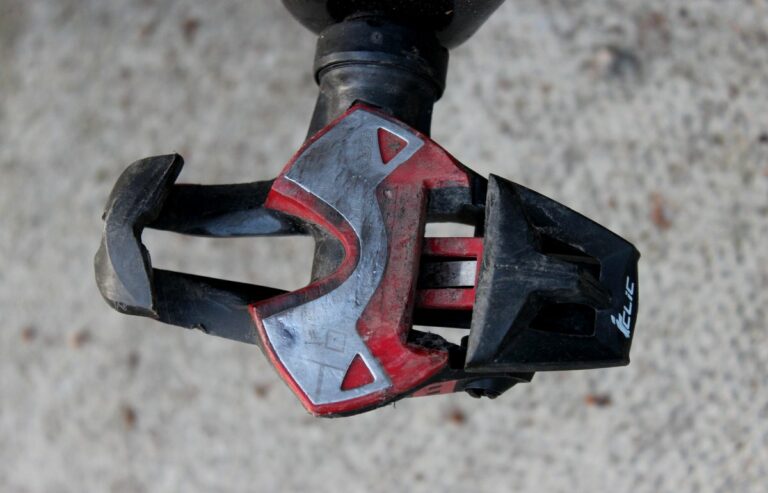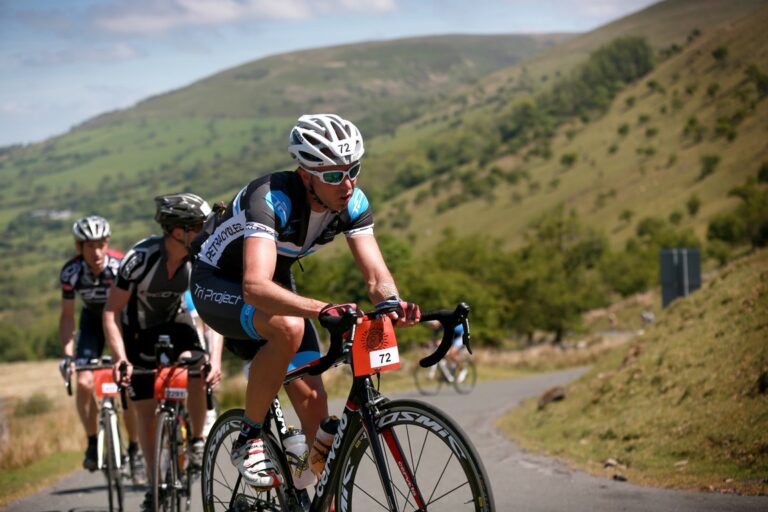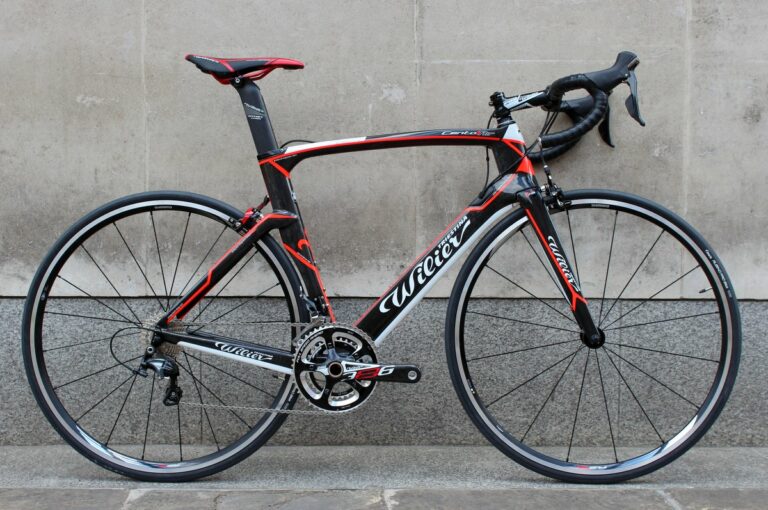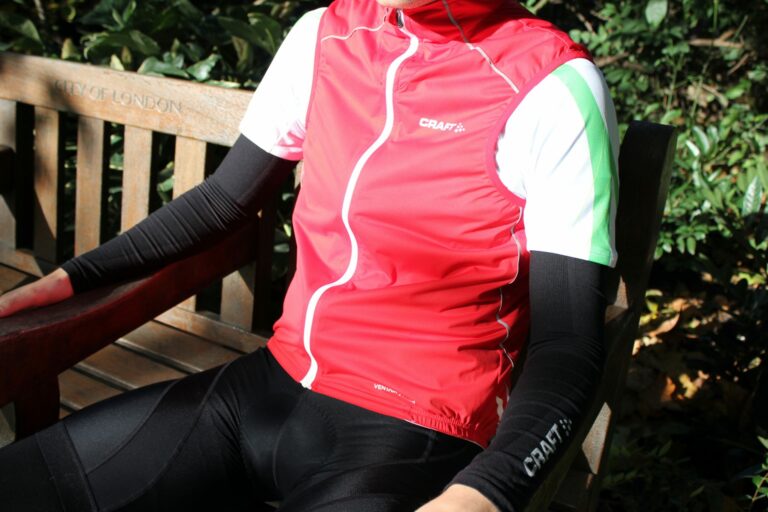Scott has unveiled its line-up for model year 2014.
The Solace, a new model, made its debut on UK soil this week at Scott’s dealer launch, and we headed along to make a detailed inspection.

We got the technical story on Scott’s new entry to an ever expanding market for machines inclined to sportive-style endurance events rather than racing, and cast an eye over the Swiss-American brand’s existing offering to that market: the CR1.
For a detailed look at the race-inspired half of Scott’s range – the reintroduced Addict and the aero-profiled Foil – click here.
Solace
With the greater part of cycling’s massively expanding cohort typically among the middle aged, demand for the endurance/performance/sportive bike, typically one with a taller head tube, longer top tube, and longer wheelbase than its race-oriented stablemates, shows no signs of slowing.
Enter the Solace. While the more upright geometry synonymous with the breed has made some ‘sportive’ bikes the ugly sister of their sleek, race-inclined cousins, the silhouette of Scott’s new bike is, well, rather beautiful. Its swooping, bridge-free seat stays (the rear brake is chainstay mounted), internal cable routing (suitable for mechanical and electronic cables) and muscular bottom bracket are the key contributors to a silhouette that promises performance. Available in 12 sizes (seven for men, five from separate moulds for women in the brand’s ‘Contessa’ geometry), with size-specific tubing, and a claimed 890-gram frame weight in a 54cm, Scott’s commitment to the Solace is obvious. Is it justified? We’ll be judging their success when their handiwork arrives for test, but for now, here’s a close look at the design features.
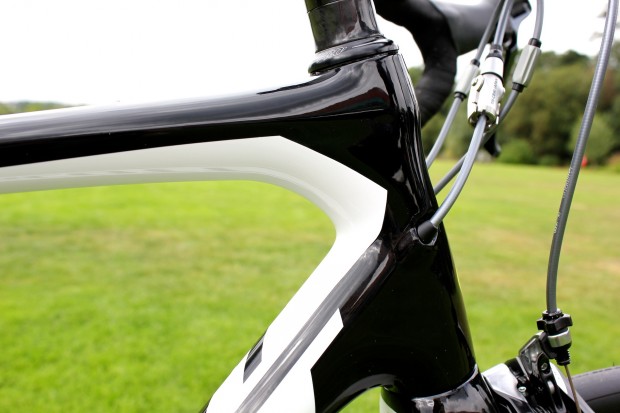
The CR1 has until now been Scott’s sole torch bearer in the land of comfort-inspired geometry: one shared by the Solace in all but the headtube, which is 10mm taller. While the CR1 remains in the range, the brief given to a design team headed by Scott’s chief engineer, Benoit Grelier, was to create a superior machine. The numbers attest to performance gains (49 per cent more deflection in the seatpost,17 per cent stiffer at the bottom bracket), and we’ll be able to offer our own opinion next month when a Solace arrives for test. Here, we’ll examine the design.
Stay seated
With comfort at the top of the agenda, Scott’s engineers deployed various design tweaks to induce compliance in the frame’s ‘comfort zone’ i.e. the seat stays, the upper section of the seat-tube, and the rearward sections of the top tube (all but the section adjoining the head tube). The remaining area – the chainstays, bottom bracket, lower section of the seat-tube, the headtube and the section of the top tube closest to it – Scott dub “the power zone” (they are not alone in doing so – we saw similar diagrams during our visit to Lapierre in July).
Having deduced the areas of the frame from which compliance might be wrung, the designers set about modeling the effects of various design tweaks. The profile of the Solace top tube, for example, is 5mm slimmer than that of the CR1 (25mm and 30mm, respectively). The diameter of the Solace seat-tube in its upper section is 31.2mm, compared to 34.4mm on the CR1.
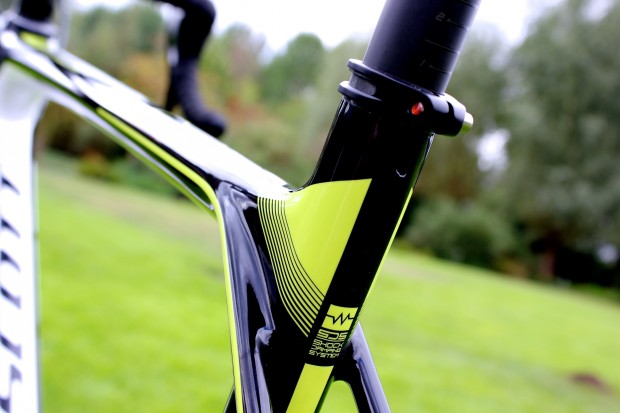
Lowering the seat stays yielded the greatest increase in compliance – nearly 30 per cent – but reduced stiffness at the bottom bracket by four per cent. By moving the seat stays forward, however, they achieved a 21 per cent increase in comfort, with virtually no loss of stiffness at the bottom bracket, and a slight increase in stiffness at the headtube. The Solace’s ‘flowing’ seatstays are its most visually appealing feature. They cross the seat-tube some 100mm below the top edge; compare and contrast with the CR1, where the seatstays join the rear of the seat-tube in a conventional ‘cluster’, and just 58mm below its top.
Another notable feature of the seat stays, and a further inducement to compliance, is the Madone-like absence of a brake bridge: the caliper is mounted below the chainstays (Shimano Ultegra, 105, or Tektro, depending on the model). The same design was considered for the Addict, but the chainstay-mounted caliper was found to be heavier than a conventional unit.
Scott claim the Solace is 42 per cent more comfortable than the CR1, using seatpost deflection as the measure of comfort
Several prototypes of the Solace were built, some stiffer, others more compliant than the final version, and tested by different riders. Scott is confident the production machine strikes the right balance.
Evidence? Scott claim the Solace is 42 per cent more comfortable than the CR1, using seatpost deflection as the measure of comfort. The fork is just three per cent more compliant than its stablemate, but no heavier, largely due to the use of an integrated (cup-free) headset (the CR1’s semi-integrated unit uses bearing cups).
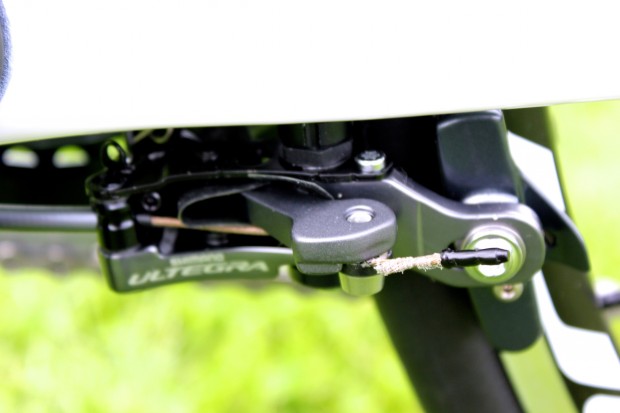
The Solace downtube is 25 per cent wider than that of the CR1, yielding increased stiffness at the junction with the bottom bracket; the seat-tube on the Solace is 17 per cent wider at its junction with the bottom bracket (it’s slimmer at the top, as noted above). The net gain in stiffness at the bottom bracket is a claimed 17 per cent.
Asymmetric
Asymmetric design is not a new concept to bicycle designers, of course (Pinarello have made it their calling card) and an obvious solution to the differing forces applied to the rear triangle, but it’s an interesting feature of the Solace regardless. The driveside chainstay is 2mm broader than the non-driveside; and the seat-stay 3mm broader.
Sized up
The Solace will come in seven sizes for men, and five sizes, from different moulds, for women. Interestingly, the tubes are size specific, a concept pursued by Specialized. The circumference of the downtube on the 49cm Solace is 3mm less than that of its 58cm cousin, for example. The lay-up of the tubes is size specific too: essentially ‘softer’ for smaller frames, typically ridden by lighter riders. Scott have followed a simple concept: by deploying tubes of the same size and lay-up as those used in a medium frame across the range, riders on large frames risk facing greater flex, while riders of smaller frames end up with unnecessarily heavy tubes.
Significant others
The Solace range contains four bikes, and tops out with the Premium at £6999, a flagship steed fashioned from Scott’s Toray T800-derived HMX lay-up, dressed in Shimano Dura Ace Di2 9070, and rolling on full carbon Syncros R1.1 carbon clinchers.
The mechanical Dura Ace-equipped Solace ’10’, pictured in this article, will sell for £3599, while the ’20’, covered with a full Ultegra groupset, will cost £2799. The entry-level Solace ’30’, with Shimano 105 mechs and shifters, RS11 aluminium clinchers and non-series chainset and brakes, will cost £1999.
CR1
The Scott CR1 celebrates its third birthday, with a three bike range that cements its position as the entry-point to the Swiss firm’s range of carbon fibre. It has a comfort-oriented, rather than race-inclined geometry, and a lay-up billed by Scott as SDS (“Shock Dampening System”), now used in their Scale range of hardtail mountain bikes. The fibres are slightly thicker than Toray T700, according to Scott’s engineers, but fabricated using Scott’s proprietary IMP moulding process.

The seat stays unite in a monostay, and the cable routing is external. Bottom brackets vary between Octalink, external, and press fit, depending on the model. Perhaps most impressively at this price, each model has a full carbon fork.
CR1 10
The CR1 10 costs £1699. The groupset is billed as Shimano Ultegra, but in reality, Shimano’s second-from-top components are limited here to the dual control levers and derailleurs. The chainset is non-series, although equipped with a press fit bottom bracket, and the calipers are the same Shimano BR-R561 featured on the CR1 20. More encouragingly, the wheels are Shimano’s RS11, a new edition to the Japanese giant’s component range, unveiled in March, hand built and with 30mm deep rims.
CR1 20
An additional £300, gets you the CR1 20, another machine with Scott’s IMP chassis and full carbon fork, but with Shimano 105 dual control levers, and a non-series crank with an outboard bottom bracket, rather than the Octalink specced on the CR1 30. The calipers are Shimano’s BR-R561, a common choice among manufacturer’s at this price (Cube, Giant, et al). The wheels are Shimano’s R501 aluminium clinchers, at 1900 grams a set, likely to be your first upgrade.
CR1 30
The entry-point to Scott’s range of carbon road bikes, the CR1 30 has been reduced to £1199 for model year 2014. The shifting and braking is handled by Shimano SORA components, while the chainset is a non-series offering with the Japanese giant’s Octalink internal bottom bracket. Finishing kit and wheels are from Syncros, now Scott’s house brand.
Website: Scott Sports


